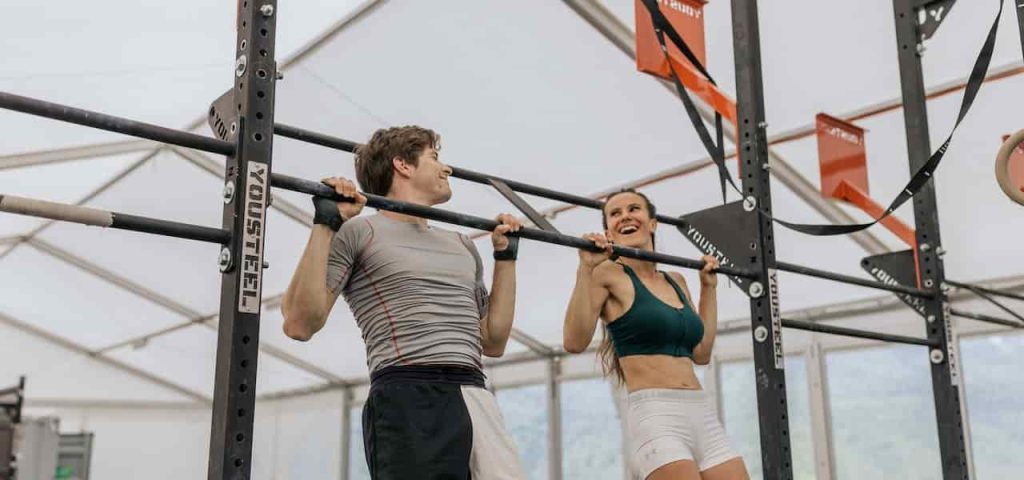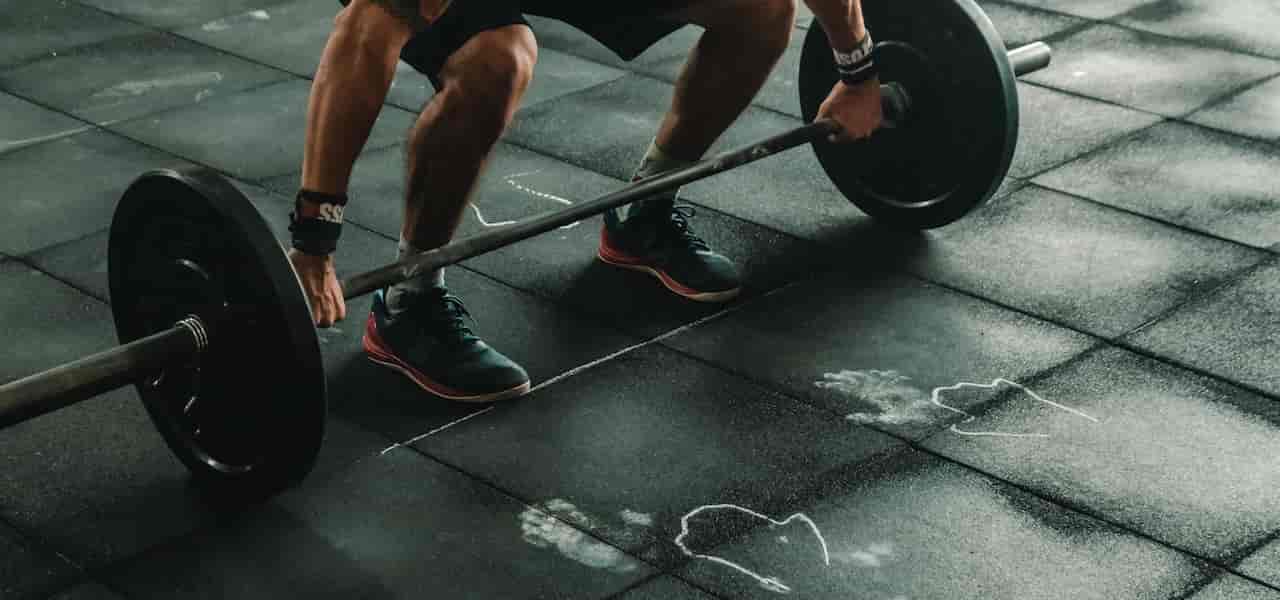Here is your complete guide to compound vs isolated exercise.
Introduction to Compound vs Isolated Exercise
When it comes to designing an effective workout routine, exercise selection plays a crucial role in achieving your fitness goals. Two popular categories of exercises that often come into focus are compound exercises and isolated exercises. Understanding the differences and benefits of each can significantly impact your workout results. In this comprehensive guide, we’ll dive deep into the world of compound and isolated exercises, exploring their unique advantages and how to strike the right balance between the two for an optimal workout routine. So what you need to know about the compound vs isolated exercise. Why the compound vs isolated exercise is so important. Here is your complete guide to the difference between compound vs isolated exercise. So let’s explore step by step the compound vs isolated exercise. So what is compound vs isolated exercise?
Benefits of Compound Exercises: Compound vs Isolated Exercise
Compound exercises are multi-joint movements that engage multiple muscle groups simultaneously. They provide numerous advantages that make them an essential component of any workout routine.
Firstly, compound exercises are highly efficient in terms of time. Since they target multiple muscle groups at once, you can work on your strength, endurance, and coordination in a single movement. Exercises like squats, deadlifts, bench press, and pull-ups are excellent examples of compound exercises that activate various muscles throughout the body.
In addition to saving time, compound exercises also promote functional strength and coordination. By mimicking real-life movements, they enhance your ability to perform everyday tasks with ease. Whether you’re lifting heavy objects or participating in sports, the increased overall strength and coordination gained from compound exercises prove invaluable.
Moreover, compound exercises boost your metabolic rate and promote calorie burn. As multiple muscles are engaged simultaneously, more energy is required to perform these movements, leading to an increased calorie expenditure. This aspect makes compound exercises a great choice for individuals aiming to lose weight or improve their body composition.
Examples of Compound Exercises: Compound vs Isolated Exercise
Let’s explore some popular compound exercises that you can incorporate into your workout routine:
Squats

This exercise primarily targets the lower body, engaging muscles like the quadriceps, hamstrings, and glutes. It also recruits core muscles for stability and balance.
Deadlifts
Deadlifts work the entire posterior chain, including the glutes, hamstrings, lower back, and upper back. They are fantastic for building overall strength and improving posture.
Bench Press

This compound exercise primarily targets the chest, shoulders, and triceps. It also engages stabilizer muscles in the core and upper back.
Pull-Ups

Pull-ups activate a wide range of upper body muscles, including the back, biceps, and shoulders. They are highly effective for building upper body strength and improving grip strength.
How Isolated Exercises Target Specific Muscles
While compound exercises offer numerous benefits, isolated exercises shouldn’t be overlooked. Isolated exercises focus on targeting specific muscle groups, allowing you to address weaknesses, improve muscle definition, and enhance muscular endurance.
Isolated exercises involve single-joint movements and isolate a particular muscle or muscle group. They are beneficial for individuals looking to strengthen specific areas or achieve more balanced muscle development. For instance, bicep curls, tricep extensions, and calf raises are common examples of isolated exercises.
Advantages of Isolated Exercises
Target Specific Muscle Groups
Isolated exercises enable you to target specific muscles or muscle groups that may require additional attention. This specificity allows you to address muscular imbalances or weaknesses and bring them up to par with the rest of your physique.
Improve Muscle Definition and Symmetry
By isolating specific muscles, you can focus on enhancing their definition and symmetry. This is particularly useful for bodybuilders and individuals aiming for aesthetic goals.
Enhance Muscular Endurance and Stabilization
Isolated exercises help improve muscle endurance and stabilization by isolating and fatiguing specific muscles. This can be beneficial for athletes or individuals involved in sports that require repetitive and specific muscle movements.
Assist in Injury Rehabilitation
Isolated exercises are often prescribed during injury rehabilitation to strengthen specific muscles or regain strength in a targeted area. They allow for controlled and gradual progression, aiding in the recovery process and minimizing the risk of reinjury.
Considerations for Exercise Selection: Compound vs Isolated Exercise
When deciding between compound and isolated exercises, it’s important to consider several factors that can help you make the most informed choices for your workout routine.
Fitness Goals and Priorities: Compound vs Isolated Exercise
Clearly define your fitness goals, whether it’s building overall strength, increasing muscle mass, improving athletic performance, or targeting specific areas for aesthetic purposes. This will guide your exercise selection process.
Training Experience and Skill Level: Compound vs Isolated Exercise
Beginners may benefit from starting with compound exercises to develop a strong foundation of overall strength and coordination. As you progress, you can gradually incorporate isolated exercises to address specific areas or weaknesses.
Time Constraints and Workout Preferences
Consider the time you have available for your workouts and your personal preferences. Compound exercises are time-efficient and suitable for those with limited time. However, if you enjoy the mind-muscle connection and focus of isolated exercises, you can allocate time accordingly.
Differences Between Compound and Isolated Exercises
| Compound Exercises | Isolated Exercises | |
|---|---|---|
| Definition | Multi-joint movements that engage multiple muscle groups | Single-joint movements that isolate specific muscles |
| Muscle Groups | Engages multiple muscle groups simultaneously | Targets specific muscles or muscle groups |
| Efficiency | Time-efficient, work on strength, endurance, coordination | Time-consuming, focus on specific muscle groups |
| Functional | Promote functional strength and coordination | Enhance muscle definition and symmetry |
| Calorie Burn | Boost metabolic rate, burn more calories | Moderate calorie burn |
| Strength | Build overall strength and power | Target specific muscle strength and endurance |
| Coordination | Improve overall coordination and balance | Less emphasis on coordination |
| Muscle Growth | Stimulate muscle growth in multiple areas | Target specific muscles for hypertrophy |
| Fat Loss | High calorie expenditure, promote fat burning | Moderate calorie burn |
| Injury Rehab | Assist in injury rehabilitation | May be beneficial for targeted rehab exercises |
| Workout Order | Often performed at the beginning of the workout | Often performed after compound exercises |
This table provides a quick overview of the differences between compound exercises and isolated exercises. It highlights their definitions, muscle groups targeted, efficiency, functional benefits, calorie burn, strength development, coordination enhancement, muscle growth stimulation, fat loss potential, injury rehabilitation benefits, and suggested workout order. Remember that the effectiveness of exercises may vary based on individual goals and preferences.
Balancing Compound and Isolated Exercises: Compound vs Isolated Exercise
The key to an effective workout routine is striking a balance between compound and isolated exercises. Incorporating both types of exercises can provide a comprehensive approach to fitness and yield optimal results.
Begin your workout with compound exercises that engage multiple muscle groups and promote overall strength and coordination. This helps maximize calorie burn and build a solid foundation. As you progress, add isolated exercises to target specific muscles or areas that require extra attention.
Here’s an example of a well-rounded workout routine that combines compound and isolated exercises:
- Squats (Compound)
- Sets: 3
- Reps: 8-10
- Rest: 60 seconds
- Bench Press (Compound)
- Sets: 3
- Reps: 8-10
- Rest: 60 seconds
- Lat Pulldowns (Compound)
- Sets: 3
- Reps: 8-10
- Rest: 60 seconds
- Bicep Curls (Isolated)
- Sets: 3
- Reps: 10-12
- Rest: 45 seconds
- Tricep Extensions (Isolated)
- Sets: 3
- Reps: 10-12
- Rest: 45 seconds
- Lunges (Compound)
- Sets: 3
- Reps: 10-12
- Rest: 60 seconds
Remember, this is just a sample routine, and you should tailor your workout to your specific goals and preferences. Consult with a fitness professional to create a personalized program.
Read More About Healthy Recipes with Eggs.
Frequently Asked Questions (FAQs) About Compound vs Isolated Exercise
Is it better to do compound exercises or isolation?
Both compound exercises and isolation exercises have their own benefits, and the choice between the two depends on your specific goals and preferences. Compound exercises are excellent for overall strength, coordination, and efficiency, as they engage multiple muscle groups simultaneously. They are especially beneficial for beginners or individuals with limited time for workouts. On the other hand, isolation exercises allow you to target specific muscles or areas that require extra attention, helping to enhance muscle definition, address weaknesses, and improve symmetry. For a well-rounded workout routine, it’s recommended to incorporate a combination of compound and isolation exercises.
Read More About Chia Seed is Good for What?
Is compound or isolation better for muscle growth?
When it comes to muscle growth, both compound and isolation exercises play important roles. Compound exercises are highly effective for building overall muscle mass and strength because they engage multiple muscle groups, allowing you to lift heavier weights and stimulate a greater hormonal response. They create a strong foundation for muscle growth. Isolation exercises, on the other hand, are valuable for targeting specific muscles and achieving more refined muscle definition. By isolating and fatiguing individual muscles, you can focus on hypertrophy (muscle growth) in those specific areas. To maximize muscle growth, it’s recommended to incorporate compound exercises for overall strength and mass, while using isolation exercises to target specific muscle groups and achieve balanced development.
Read More About What is The Benefit of Papaya.
Are compound or isolation exercises better for fat loss?
Both compound and isolation exercises can contribute to fat loss, but compound exercises tend to be more effective in this regard. Compound exercises engage multiple muscle groups and require more energy expenditure, leading to a higher calorie burn during and after the workout. They also stimulate the release of growth hormone and testosterone, which can enhance fat loss. Additionally, compound exercises help improve overall strength and increase muscle mass, which raises your metabolic rate and promotes fat burning even at rest. However, it’s important to note that fat loss ultimately depends on creating a calorie deficit through a combination of exercise and a balanced diet. Incorporating both compound and isolation exercises into your workout routine can provide a well-rounded approach to fat loss.
Read More About Do Saunas Help to Lose Weight?
Should I do compound or isolation exercises first?
The order in which you perform compound and isolation exercises can vary based on your goals and preferences. However, it’s generally recommended to prioritize compound exercises at the beginning of your workout. Compound exercises require more energy, recruit multiple muscle groups, and often involve lifting heavier weights. By performing them first, when your energy levels are highest, you can give them the focus and effort they require. Additionally, compound exercises activate the central nervous system, priming your body for the workout ahead. After completing compound exercises, you can move on to isolation exercises, targeting specific muscles or areas to further enhance muscle development and definition. Remember to always warm up properly before any workout, regardless of the exercise order.

